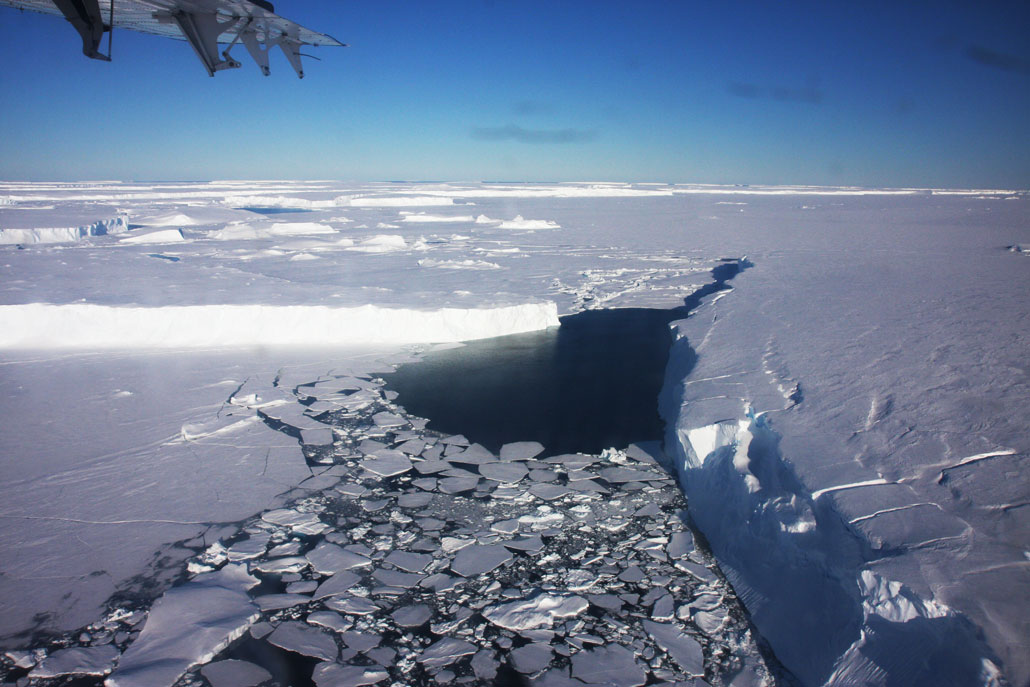A weird upside-down world lurks beneath Antarctica’s ice
Strange sea creatures make their home in the dark underbelly of a floating glacier

This anemone lives in a burrow carved into the underside of an Antarctic ice shelf. Photographer Laurent Ballesta captured a rare look at this ice-dweller while on a dive. The photo is part of a portfolio for which Ballesta won Wildlife Photographer of the Year 2022 from the London Natural History Museum.
©Laurent Ballesta
One of the least-explored places on Earth lies just off the coast of Antarctica. Some 1.5 million square kilometers (580,000 square miles) of ocean there — a vast area the size of Alaska — sits in perpetual darkness. It hides beneath 200 to 600 meters (650 to 2,000 feet) of floating ice. That makes it virtually inaccessible to humans.
Still, in January 2020, a team of researchers made a rare attempt to explore it. They camped on the floating Thwaites Ice Shelf. There, they melted a narrow hole 600 meters (2,000 feet) through the ice. Then they lowered a long, skinny, remote-controlled submarine — called Icefin — to probe the dark waters below.
And it turned up a startling discovery.
As Britney Schmidt watched, the sub’s camera displayed glistening stars. They dangled like Christmas tree ornaments from the icy ceiling above. Dozens of these sparkling stars waved their arms like flower petals.
Schmidt, at the time, was sitting inside a tent atop the ice. Staring at a computer screen, she watched live video being relayed up from the sub as it skimmed just below the ice. The ceiling’s smooth surface gleamed like a mirror in Icefin’s floodlights.
They showcased animals dangling from that ice. But as the sub approached, the critters withdrew, one by one, into small holes in the ice.
Called anemones, these tentacled creatures normally live on the seafloor. Like flowers, they sprout from rocks or sit rooted in sand. But not here. These critters instead had burrowed into the ice, forming what looked like an upside-down aquatic garden.
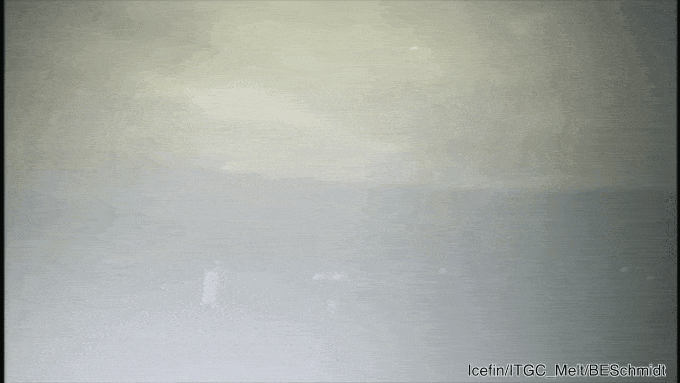
Shrimp-like crustaceans flitted around them, like bumblebees in a meadow. A fish rested upside down on the ice ceiling, like a cat laying in the grass.
“It was amazing,” says Schmidt, who works at Cornell University in Ithaca, N.Y. A glaciologist, she has devoted much of her career to exploring under the ice. What she witnessed here looked otherworldly, she recalls — like something out of “Alice in Wonderland.”

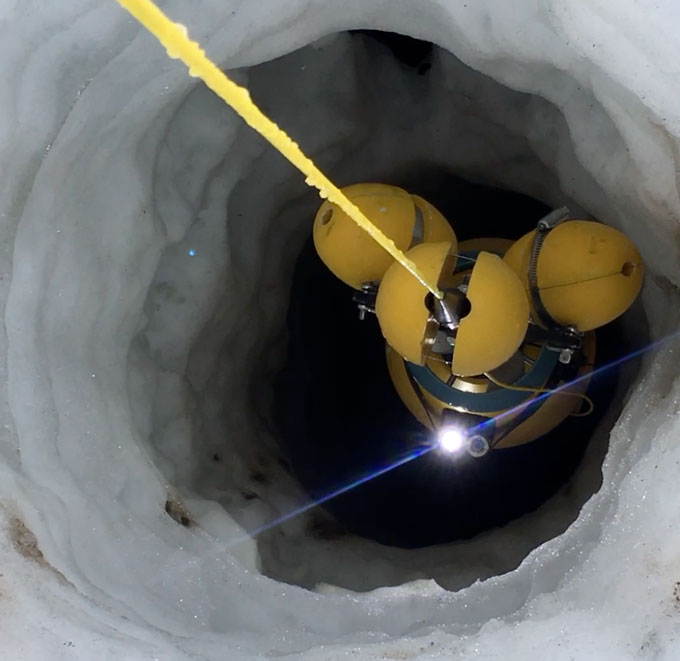
This dark, frigid place may seem extreme to us. But animals had adapted to make it home. And with 99.99 percent of the ocean beneath Antarctica’s floating ice shelves still unexplored, plenty of other weird, undiscovered life may share these waters.
In fact, says Craig Smith, “It’s not just possible, it’s a certainty.” Smith is a seafloor ecologist at the University of Hawaii at Manoa. He’s spent 20 years exploring waters around Antarctica.
These strange animals show us that life can thrive in some bizarre places on Earth. The under-ice communities could also hint at what kinds of life might exist in places much further afield — such as in the outer reaches of our solar system.
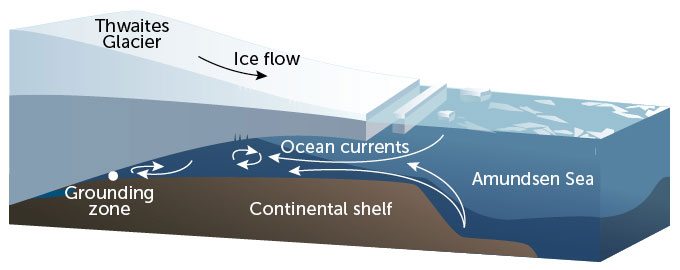
Dangling ‘flowers’ aglow
Few people realize it, but much of Antarctica’s ice sheet sits below sea level in a shallow bowl. The ice is thick enough that its upper surface rises far above the water — making it look like an ordinary continent. As rivers of ice ooze toward the edges of the continent, they thin until they peel off the seafloor and float. A floating “ice shelf” can extend anywhere from several kilometers to 600 kilometers (up to 375 miles) off the coast.
Water beneath ice shelves is cut off from sunlight — the energy that sustains most life on Earth — and photosynthesis. So for a long time, people had assumed little life existed under these ice shelves.
But clues that something might have carved out a home under the ice — and in it — have been slowly emerging.
Do you have a science question? We can help!
Submit your question here, and we might answer it an upcoming issue of Science News Explores
The first sign came in 1975. John Oliver landed on the McMurdo Ice Shelf in a helicopter. He was 2,300 kilometers (1,425 miles) west of the Thwaites Ice Shelf. Oliver noticed a natural crack in the ice shelf and decided to scuba dive through it, into the sea below.
At the time, Oliver was an oceanographer at the Scripps Institution of Oceanography in La Jolla, Calif. He was studying how oceans shape coastal glaciers. And as he and his dive partner descended down a wall of ice, they saw something bizarre.
At 30 meters (about 100 feet) below the surface, violet-glowing objects dotted the ice above them. These were anemones rooted in the ice. Their strange glow — called bioluminescence — was produced by chemical reactions inside their bodies.
It took a long time for the news to get out
Oliver later returned and tried to gather some of the critters. He and his dive partner chipped at the ice with a metal bar. But each time they dislodged an animal, its buoyant body shot upward like a cork before they could grab it.
The water soon began to swirl with ice crystals, making it difficult for them to see. Fearing that they wouldn’t find their way back, they returned to the surface of the ice crack and climbed out.
Oliver never revisited the ice.
He also never reported his strange sighting — except for a single sentence buried in a scientific paper about glaciers (a line that few people noticed).
In 2003 — 28 years later — Yuuki Watanabe accidentally captured the first photos of these animals. A biologist, he worked at the University of Tokyo in Japan back then. He had been camping near the edge of the Riiser-Larsen Ice Shelf, 1,500 kilometers (930 miles) east of Thwaites. Hoping to see what seals there were eating, he attached cameras to the seals before they dove into the water.
Several of the fuzzy photos that he captured showed what looked like anemones. They were dangling from the underside of the ice shelf.

In 2015, marine biologist Laurent Ballesta would lead an expedition focusing on Antarctica’s deep ecosystems. On that trip, the renowned French wildlife photographer became the first autonomous diver to get a photo detailing the anemone’s structure (see story’s opening image). He came across these animals during grueling dives of safety stops under the ice ceiling (some lasting as long as 5 hours in water that was a very chilly -1.8° Celsius — 29.3° Fahrenheit).
Sucking critters into a coffee filter
In 2010, engineer Bob Zook visited the Ross Ice Shelf, 2,000 kilometers (1,240 miles) west of Thwaites. He was unaware of the earlier anemone sightings. At the time, he worked at the University of Nebraska in Lincoln. Researchers had just melted a narrow hole 250 meters (820 feet) through the ice shelf. To see how well the hot water drilling had worked, Zook’s job was to take video under the ice.
Zook had built a remote-controlled craft. Called SCINI (pronounced “skinny”), it was designed long and thin to fit through narrow holes in the ice. As he steered SCINI around, he watched live video feed from its cameras.
And what he saw shocked him.
Hundreds of anemones waved their tentacles from burrows in the ice. “We really felt like we were on another planet,” he recalls.
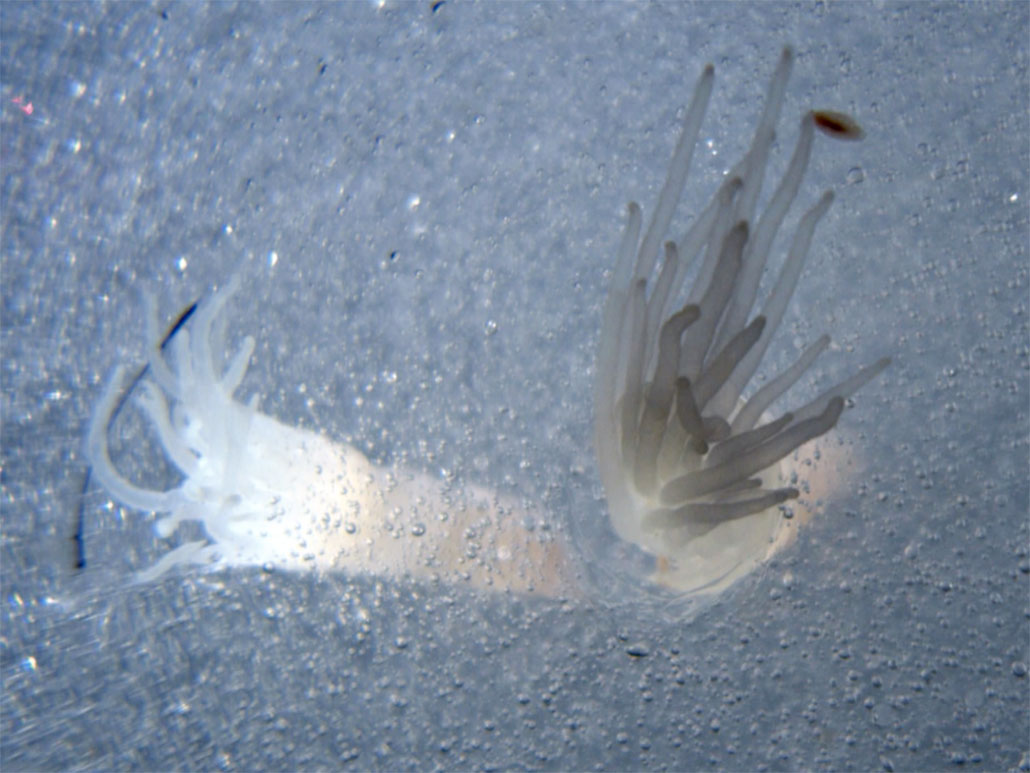
Zook wracked his brain, looking for a way to pluck some of the animals from their holes. After several days, he had an idea: modify SCINI so it could suck the anemones from their burrows.
He reversed the direction of one of SCINI’s thrust propellers. This now pulled water toward the propeller. In front of that propeller, he placed a metal coffee filter that he swiped from the kitchen tent. It would act as a basket and trap the animals before they got pulled into the propeller and chopped into sushi.
Using this jimmied setup, he managed to collect 20 or so anemones. “It was pretty exciting,” he says. In fact, he recalls, “We were jumping up and down, falling on the floor, pounding our fists on the floor.”
To survive a melting home
The anemones Zook collected look like those Schmidt would later see under the Thwaites Ice Shelf.
In 2013, they were recognized as a new species. Marymegan Daly is an anemone biologist at Ohio State University in Columbus. She identified them as being closely related to anemones in warmer parts of the world — ones that burrow into sand.
To adapt to life in ice, the new species had to overcome several challenges. They don’t just have to avoid freezing. They also have to work hard just to stay in their burrows.
The ice shelves they call home are gradually melting. Thwaites is melting especially quickly. A layer of ice roughly half a centimeter (two-tenths of an inch) thick vanishes off its underside each day. To avoid being melted out, the animals must “constantly burrow into the ice,” says Schmidt — a little deeper each day.
Daly thinks the animals might do this by pumping concentrated salt into the water that lines their burrows. This would encourage the ice to melt.

She suspects anti-freeze microbes might also fill the anemones’ burrows. Many microbes in Antarctica are able to keep water from freezing. Proteins they make latch onto ice crystals and stop them from growing.
Daly would like to investigate this: “In my dream world, we could sample the fluid just around the anemone and see if it were enriched” in either salt or these microbes.
But the most interesting thing about the anemones may be that they weren’t living alone. Schmidt and Zook found an entire ecosystem. A whole collection of animals were living together in a previously unknown habitat: an upside-down “seafloor” rooted to the underside of the ice shelf.
And those animals were doing some strange things.
Thieves, grazers and hangers-on
Like plants, anemones normally spend their entire life rooted in one place. But as Schmidt watched video of the ice anemones in 2020, she saw two or three of them emerge from their holes.
“They wiggle out like a worm,” she says. Then they use their whole bodies to move through the water — sort of like a dolphin. Out of 1,000 anemone species known to science, only two others have been seen doing this. The purpose of it remains unknown.
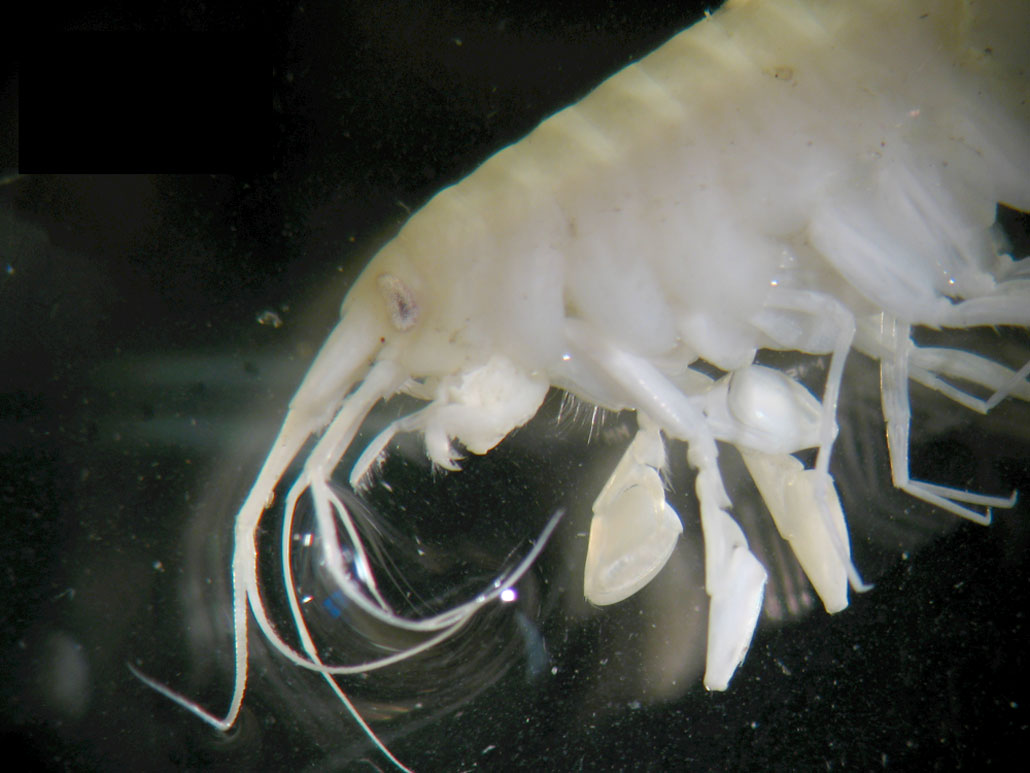
Zook’s video footage in 2010 revealed another oddity. He saw small blurry dots constantly crawling up and down the anemones’ tentacles. He believes they were 14-legged crustaceans known as amphipods.
These may be “taking advantage” of the anemones, says Huw Griffiths. He’s a marine biogeographer at the British Antarctic Survey in Cambridge, England. Hungry anemones probably catch tiny bits of plankton with their tentacles. Those amphipods may then steal some of that food.
Zook also photographed another unusual animal, which he never managed to collect. This white, finger-length worm sat on the lower surface of the ice. Bristles lined each of its sides.

When Smith from Hawaii saw a photo, it looked familiar. It resembled worms he’d seen in the deep sea. Some lived near hydrothermal vents, or on the sunken carcasses of whales.
“We’ve observed them just eating their way through what looks like a tiny bed of grass,” Smith says. The so-called ”grass” is white and made of microbes. The bacteria grow in filaments, eating chemicals that ooze from a rotting whale. The worms, like the anemones, are likely an unknown species now adapted to living on ice.
And then there are the fish seen hanging out upside-down on the ice.
These may be a species that lives elsewhere in the sunlit waters around Antarctica. Those fish, called striped rockcod, are often seen resting on the seafloor, says Paul Cziko. He’s an evolutionary biologist. He frequently worked in Antarctica between 2002 and 2018 (while at the University of Oregon and the University of Illinois, Urbana-Champaign).

Cziko had kept some of these rockcod in a research aquarium. Sometimes, he found, they’d just sit on its walls. They’d stick to the glass as if their flat belly was a suction cup. This curious little superpower might now explain how they adhere to the undersides of ice shelves.
The biggest question about all of these animals is “what the heck are they eating?” says Stacy Kim. This marine biologist recently retired from Moss Landing Marine Laboratories in California. She spent many years working in Antarctica.
Cut off from sunlight, the vast waters under ice shelves were once thought to be biological deserts.
But as scientists explore more of the subglacial sea, they are getting some idea of what life down there might eat.

Plankton, poo and rotting goo
As Schmidt piloted Icefin under Thwaites Ice Shelf in 2020, she saw tiny specks constantly drifting about. She believes they’re bits of plankton, poop and other edible stuff that ocean currents bring in from the sunlit ocean, up to 15 kilometers (9 miles) away.
”There’s enough there for everyone to be eating happily,” she says.
Other places where anemones show up are also close enough to the sunlit ocean that currents could ferry in some food. But the creatures may also have another, stranger food source — one that washes out from deep inside the Antarctic continent.

Scientists have drilled 20 or 30 holes through the West Antarctic Ice Sheet, inland from the Thwaites, McMurdo and Ross Ice Shelves. Tiny glassy shards litter mud at the bottom of each. These hard bits are fragments of sea-sponge skeletons and diatom shells. Ocean organisms, they lived here millions of years ago, back when the world was warmer.
Back then, a shallow sea filled the broad bowl where the West Antarctic Ice Sheet sits today. As these organisms lived and died, trillions of tons of rotting goo gathered on the sea floor.
Nutrients from that goo are now seeping out of the mud and into freshwater rivers that flow beneath the ice sheet. Those nutrients eventually spill into the dark ocean, under the ice shelves that encircle Antarctica.
Trista Vick-Majors is a microbial ecologist at Michigan Technological University in Houghton. She estimates that roughly 56,000 tons of organic materials flow from the West Antarctic Ice Sheet into the ocean each year. Smaller amounts of nitrogen, phosphorus and iron also leak out from under the ice sheet, she estimates.
The fresh water carrying these nutrients is less dense than sea water. So when it reaches the ocean, it rises and moves along the underside of the ice shelf. It would flow directly through an anemone colony.
Microbes living inside the anemones may consume these nutrients, says Kim at Moss Landing Marine Laboratories. Those microbes could make sugars and other substances that could help feed the anemones.
“This group of organisms — anemones — forms symbioses,” she says. By that, she means the anemones often form cooperative communities with microbes that live inside or around them.
So far, this is only a suspicion. That’s because these animals have hardly been glimpsed. But learning about them — and what they eat — could provide hints to what sorts of life, if any, might survive in the colder and darker parts of our solar system.
Europa — one of Jupiter’s moons — looks like a ball of ice. In fact, scientists believe it harbors a vast, salty ocean under many kilometers (miles) of ice. It and several similar moons are thought to hold more liquid water than all the oceans on Earth.
Even as Schmidt explores the watery world beneath Antarctic ice, her long-term goal lies in that direction. “We would like to be able to explore ocean worlds in our solar system,” like Europa, she says. Her team would like to send a probe that can tunnel through that distant moon’s ice to search its buried ocean for life.
“That’s a hundred-year problem,” she says. “But you have to start somewhere.”
